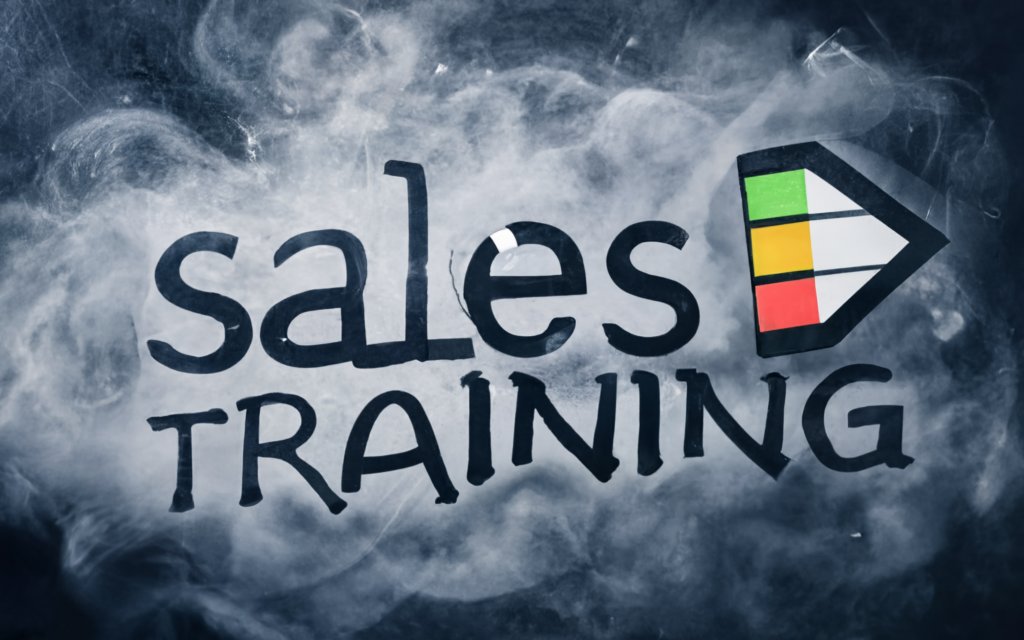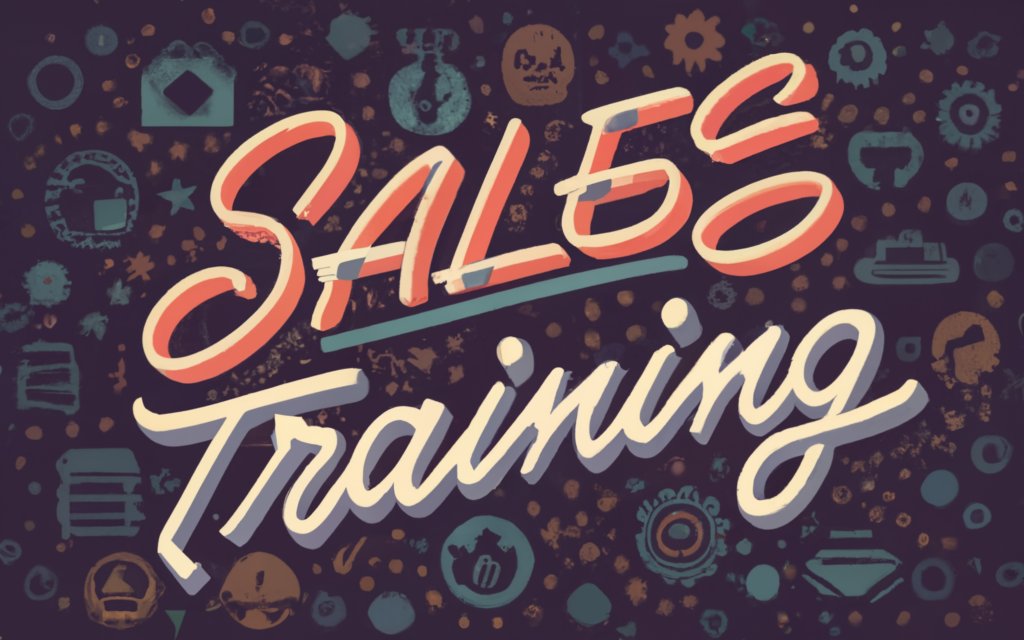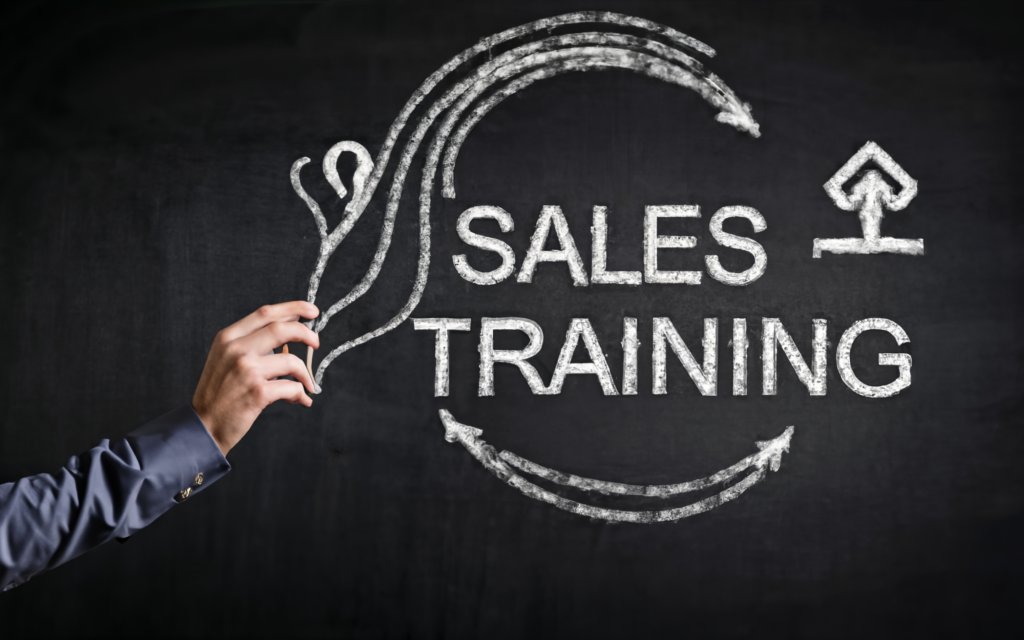Sales teams may have natural charisma, but charm will only take them so far. As the adage goes,even gifted salespeople need training to truly excel. But in today’s disrupted landscape, yesterday’s lackluster approaches can no longer cut it. Transforming your sales organization requires next-gen sales training powered by new-school tactics and technologies. This guide will walk through the proven strategies, critical topics, best formats and latest tools for training that not just informs reps but actively equips them to crush goals. You’ll learn how to foster a high-performing sales culture focused on enablement and readiness. So let’s dive into the comprehensive playbook for sales training success in 2024.
Why Invest in Sales Training?
For companies looking to improve sales and boost revenue, implementing a robust sales training program is one of the most impactful investments they can make. Though many organizations already offer some form of sales training, treating it as an ongoing initiative and making it a priority for the company can lead to incredible dividends.
Here are some of the key reasons why sales training is well worth the investment:
Improve Sales Skills
The most obvious benefit of sales training is equipping your team with the knowledge, techniques, and skills they need to effectively sell your products or services. Both new and experienced sales reps can sharpen their competencies through training.
Some key sales skills that can be developed through training include:
- Product knowledge – Being able to accurately describe product features and confidently answer prospect questions is critical. Training ensures reps are fluent with your offerings.
- Sales methodologies – Applying proven techniques for qualifying leads, delivering presentations, handling objections, and closing deals. Training builds mastery.
- Communication abilities – Active listening, building rapport through questioning, articulating value, and more. Training strengthens these soft skills.
- CRM proficiency – Optimizing use of CRM tools to manage the pipeline and track deal progression. Training drives adoption.
- Needs assessment – Uncovering prospect pain points through consultative questioning. Training reveals true motivations.
With ongoing training across these areas, you empower your sales team to have better conversations, nurture prospects more effectively, and drive deals across the finish line.
Increase Revenue and Productivity
The payoff for improving sales competencies through training is increased revenues and higher productivity. Studies have shown sales training can boost productivity by over 15%.
More knowledgeable and skillful reps will be able to:
- Prospect and qualify leads more efficiently
- Progress opportunities faster through the pipeline
- Overcome objections confidently to close more deals
- Accurately articulate the value proposition of products/services
- Build strong customer relationships leading to upsells and referrals
This directly translates into dollars gained. According to the Sales Management Association, world-class sales training programs lead to an average 20% increase in annual revenue.
The increased revenues easily justify investments into sales training initiatives. Even moderately successful programs often yield a 200-500% return on investment.
Higher Employee Retention
Providing sales reps with continuous opportunities for skills development is a key driver of employee retention. Reps who feel invested in are more engaged, motivated, and loyal.
Studies show:
- Employees who receive comprehensive training are 17% less likely to leave their job within the first year.
- Ongoing training opportunities is one of the top 3 factors influencing retention according to over 25% of employees.
- Millennial and Gen Z workers in particular see training and development as a major job incentive. Over half say it influences their decision to stay with a company.
Considering the high costs of turnover – estimated by the Sales Management Association to be 1-2X a salesperson’s annual salary – higher retention delivers material cost savings in addition to revenue gains.
Create Competitive Advantage
Finally, sales training can be a strategic investment that gives your company an edge over the competition.
With sales enablement training using the latest techniques and technologies, your team can outperform others in your industry that have lackluster training programs.
Your reps will simply be better equipped to establish credibility and trust with prospects through consultative selling approaches. They’ll be armed with the know-how to add value on every sales call.
Meanwhile, competitors who underspend on sales training will struggle with unrefined prospecting abilities, inferior product messaging, and subpar closing skills.
Forward-looking companies that make sales training a priority position themselves to gain market share in competitive sales environments.
Worth the Investment
When done right, sales training has the power to transform individual sales reps, teams, and entire revenue organizations.
Progressive leaders recognize sales training for what it is – an investment into the growth, proficiency, and performance of the sales engine that drives the business.
While training initiatives require planning, resources, and budget allocation upfront, the long-term payout in higher revenue, lower turnover, and marketplace dominance make it well worth the effort.

Key Features to Look for in Sales Training Software
Sales training software provides a centralized platform to help sales managers and enablement teams create, deliver, and track sales training initiatives. With the right features, these tools can make training sales reps intuitive, engaging, and highly effective.
When evaluating sales training solutions, here are some of the most important capabilities to look for:
Content Authoring
The ease and flexibility of creating training content is pivotal. Sales managers and subject matter experts, not just dedicated training teams, should be able to quickly put together courses.
Authoring features to look for include:
- Intuitive course builders – Drag and drop interfaces to easily assemble modules with different elements like text, images, video, and quizzes.
- Various content types – Support for videos, presentations, documents, SCORM content, external links, etc.
- Multi-format support – Upload and embed content from tools like PowerPoint, video platforms, PDFs, etc.
- Templatized content – Pre-built templates and examples to quickly customize versus starting from scratch.
- Real-time collaboration – Live co-editing capabilities for multiple authors to work together.
- Version control – Ability to track changes and edit history for individual courses and content.
- Repurposing existing content – Importing and adapting existing training materials into new courses.
- Text/HTML editors – WYSIWYG editors and markdown support for easily creating in-line text content.
The easier it is for sales managers and product experts to put together training content, the faster your catalog will grow.
Microlearning & Bite-Sized Content
Sales training content should be broken down into small, digestible segments versus lengthy lectures or materials. This microlearning approach leads to higher engagement and retention.
Microlearning features include:
- Short video segments – 2-10 minute clips covering a single concept.
- Succinct articles/text content – Brief 300-500 word lessons.
- Quizzes – Short assessments with 5-10 questions to test knowledge.
- Infographics/downloadable job aids – Visual guidance that’s easy to scan quickly.
- Audios/podcasts – Listen-worthy nuggets like a 5-minute case study.
- Interactive modules – Clickable elements and expandable sections within a lesson.
Microlearning combines the flexibility of snacking on small bits of content with the focus of targeted lessons on specific competencies. Look for authoring features that allow easily creating modular content.
Knowledge Checks and Quizzes
Inserting knowledge checks throughout training is key to boost engagement, surface understanding, identify weak points, and drive information retention.
Sales training software should provide quiz authoring capabilities such as:
- Multiple choice questions – Most common format for quickly testing knowledge.
- True/False questions – Very simple to create to check basic understanding.
- Matching exercises – Connect related concepts and ideas.
- Sequence or ordering questions – Arrange content or steps in the right progression.
- Fill in the blank questions – Recall key facts and definitions.
- Randomized quizzes – Pull from question banks and vary each attempt.
- Conditional branching – Change quiz path based on learner responses.
- Auto-grading – Immediate feedback on quiz performance.
Testing mastery through intermittent knowledge checks ensures sales reps are retaining information as they progress through training.
Analytics and Tracking
Without visibility into how sales reps are utilizing training materials, it’s impossible to determine what’s working and what’s not.
Robust analytics capabilities allow sales managers to monitor:
- Course completion rates for individuals and teams.
- Time spent engaging with specific modules and content types.
- Knowledge check attempt results and scores.
- Content consumption on mobile devices versus desktop.
- Adoption rates for different topics, formats, and programs.
- Correlations between training activity and actual sales performance.
This data enables a data-driven approach to continually refine and optimize sales training. Look for engaging dashboards that synthesize analytics for managers.
Integrations with Sales Tools
For maximum impact, sales training should directly integrate into the systems and workflows salespeople already use daily.
Common integrations include:
- CRM – Surface training modules contextually within the CRM for access during deal progression.
- Sales engagement platforms – Incorporate training into outreach cadences when relevant to boost seller proficiency.
- Digital sales rooms – Add related training materials into buyer-facing portals for client education.
- Email – Include links to training courses or content in email templates based on triggers.
- Sales methodology frameworks – Align training to the stages within methodologies like MEDDIC or BANT.
- Dialer systems – Initiate customized training based on call analysis and recorded interactions.
This embedded approach reinforces continual microlearning rather than an occasional lecture model. Integrations amplify impact.
Interactive Elements like Videos, Simulations, and Assessments
Compelling and interactive content, not just information delivery, is required to drive sales training adoption. Elements like videos, simulations, and skills assessments increase engagement.
- Videos – Combining visual and auditory learning improves information processing versus text alone by 400%, per Insivia. Short animated videos work well.
- Interactive videos – Embed questions, knowledge checks, and branching within videos to make them participatory.
- Assessments – Skills-based assessments through roleplay, presentations, or simulations measure ability.
- Gamification – Leaderboards, scoring, badges, and rewards motivate participation.
- VR/AR – Though nascent for sales training, immersive virtual or augmented reality scenarios can provide realistic practice.
- Conversation simulations – Branched dialogue trees let reps practice sales conversations through different paths.
Look for built-in tools, pre-configured options, or integrations with third-party apps to drive interactivity and engagement within the sales training platform.
Conclusion
Prioritizing functionality around intuitive course authoring, bite-sized microlearning, knowledge reinforcement, data-driven analytics, and built-in interactivity results in sales training that is truly effective in improving rep readiness.
The right tools enable sales managers to not just implement training, but to continually optimize it and ultimately transform their teams. With these key features as evaluation criteria, organizations can invest smartly.
Most Effective Sales Training Topics
While sales training should cover a wide range of areas, certain topics have proven to be most vital for improving seller proficiency. Focusing on these high-impact topics ensures your sales reps develop the core competencies needed to succeed.
Here are some of the most critical areas sales training initiatives should address:
Product Knowledge
Comprehensive training on your company’s products or services is foundational. Reps need to fully understand:
- Key product features and functionality
- How the offering is unique or differentiated in the marketplace
- Pricing and payment structures
- Implementation, delivery, or fulfillment processes
- Tech stack or architecture behind the product (if relevant)
- How the product benefits customers and solves their challenges
This enables reps to:
- Have technical conversations about product intricacies
- Confidently articulate value propositions
- Overcome feature or price objections during deals
- Set proper sales expectations around delivery, setup, etc.
Product knowledge training may involve presentations, documentation, demos by product experts, and roleplaying relevant customer interactions.
Sales Methodologies
Proven sales methodologies provide frameworks for navigating prospects through the sales cycle effectively. Training on methodologies gives reps a consistent, repeatable structure.
Common methodologies include:
- BANT – Budget, authority, need, timeline
- MEDDIC – Metrics, economic buyer, decision criteria, decision process, identify pain, champion
- Challenger – Teaching for differentiation
Methodology training should cover:
- Qualifying – Determining fit and ranking prospects based on methodology criteria.
- Presentations – Tailoring product demos and pitches to methodology stages.
- Objection handling – Responding to common obstacles using the methodology lens.
- Closing – Transitioning through the final steps of the methodology to seal the deal.
This establishes a standardized, best practice selling motion.
CRM Usage
CRM platforms like Salesforce are central hubs for managing pipelines, tracking deal progression, and storing customer data. Training helps reps utilize these systems to work smarter.
Key topics include:
- Entering contacts, accounts, and deals
- Managing workflows and sales stages
- Logging activity like calls and emails
- Accessing reports and dashboards
- Mobile usage and offline syncing
- Integrating with other sales tools
- Data protection and privacy protocols
Proper CRM adoption increases sales efficiency, provides valuable data, and ensures continuity if reps depart.
Communication Skills
At its core, selling is about human interaction. No matter how good your offering, strong communication skills are essential for sales achievement.
Important areas to cover include:
- Building rapport – Using social cues and emotional intelligence to connect better.
- Active listening – Fully concentrating on and absorbing prospect needs.
- Questioning – Asking open-ended questions to reveal true priorities, challenges, and motivations.
Roleplaying exercises help sales reps practice applying these skills effectively, such as through mock discovery calls. Communication-focused training fosters better customer connections.
Conclusion
Sales training initiatives that focus on building product expertise, methodology proficiency, CRM competency, and communications abilities equip teams with a powerful foundation for sales conversations.
Getting reps up to speed on these core areas establishes a baseline of knowledge and skills they can build upon through ongoing learning. The most effective sales training programs dedicate significant focus to mastering these foundational topics.

Formats and Best Practices for Sales Training
The formats used to deliver sales training content can dramatically impact engagement, adoption, and ultimate outcomes. Combining different modalities with adult learning best practices leads to the greatest results.
Here are some of the most effective formats and strategies for sales training:
Roleplays and Simulations
Experiential learning through roleplaying common sales scenarios is one of the most powerful training methods. Roleplays allow reps to practice skills in a risk-free environment.
Effective roleplaying strategies include:
- Peer roleplays – Reps pair off and alternate playing the role of salesperson or customer.
- Manager led – Sales managers act as the mock prospect and provide coaching throughout.
- Virtual simulations – Interactive dialogue simulations with branching conversation paths.
- Recorded practice – Reps record roleplays for self-review or manager feedback.
- Skills scoring – Evaluations of how reps apply taught techniques during the roleplay.
- Contextual roleplays – Practice handling a scenario likely to occur based on where a deal stands.
Roleplaying builds sales muscle memory through repetition in a safe training environment.
Gamification
Gamification applies elements like scoring, competition, rewards, and recognition to drive engagement with sales training content. Leveraging people’s natural drive to compete and win encourages participation beyond just completing mandatory modules.
Gamification approaches include:
- Point systems – Learners earn points for training milestones and can exchange points for rewards.
- Leaderboards – Public leaderboards promote friendly internal competition and peer accountability.
- Certifications – Unlocking badges, titles, or certifications for completing programs.
- Contests – Time-bound challenges focused on consuming specific content types or formats.
- Levels – Progress bars, checkpoints, and promotions through different ranks or levels.
- Rewards – Offering prizes, tangible rewards, public praise, or gift cards for top achievers.
Gamifying sales training taps into the competitive nature of salespeople and incentivizes consistent learning.
Peer Coaching and Mentoring
Both formal and informal peer learning are powerful complements to manager-led sales training. Peer exchanges harness experience from within the sales team itself.
Peer learning formats include:
- Group Q&A sessions – Hosting open discussions for reps to ask questions from their senior colleagues.
- Designated sales mentors – Assigning new reps an onboarding buddy or mentor to shadow.
- Peer feedback – Facilitating constructive feedback and critiques between team members.
- Best practice sharing – Having veteran reps demonstrate what optimal process execution looks like.
- Shadowing – Letting new reps silently observe sales calls by seasoned colleagues.
- Masterminds – Hosting roundtables for reps to share challenges and solve issues collaboratively.
Leveraging peer knowledge transfer reinforces formal training with social learning opportunities led by colleagues.
Continual Reinforcement
Sales training cannot be limited to a one-time event or sporadic refreshers. To combat knowledge decay, training should integrate frequent reinforcement.
Ongoing reinforcement tactics include:
- Microlearning – Short daily or weekly training nuggets like a 5-minute video or quick quiz.
- Triggered training – Contextual training prompts based on criteria like deal size or stage.
- Refresher courses – Recapping previous modules periodically via condensed versions.
- Quick polls – Impromptu pulse checks to gauge knowledge retention and identify gaps.
- Manager reminders – Managers highlighting relevant past lessons during coaching.
- Gamification – Using leaderboard resets, new reward criteria, or new contests to re-engage learners.
- Updated examples – Revisiting concepts, but using new examples to bring fresh perspective.
The most effective sales training transforms one-off events into continual learning journeys personalized to each rep.
Conclusion
Well-designed sales training leverages a mixture of modalities like hands-on practice, friendly competition, social exchange, and constant reinforcement.
Aligning formats to adult learning principles ensures your sales reps stay engaged, retain information longer, and gain the most benefit from your training investments.

Implementing Sales Training Initiatives
Getting a sales training program up and running involves much more than just purchasing software and uploading some materials. To drive adoption and impact, you need to take a strategic approach to program implementation.
Here are some best practices for rolling out successful sales training initiatives:
Getting Buy-in from Sales Team
Before launching any training program, it’s critical to get your sales team excited about and bought into the idea. Lack of engagement is one of the top reasons sales training fails.
Some tips for generating buy-in include:
- Highlight individual benefits – Explain how the training will make each rep’s job easier, boost their career growth, and increase their earnings through higher commissions.
- Incorporate feedback – Involve sales leaders and top reps early to gather input on program design and content prioritization.
- Offer incentives – Consider rewards like gift cards or points that reps can earn by completing certain levels of training.
- Be transparent on goals – Share the business objectives and KPIs the program aims to impact so reps understand why it matters.
- Communicate expectations – Set clear guidelines regarding training completion requirements while allowing flexibility in pacing and scheduling.
- Celebrate milestones – Call out reps who complete training levels and highlight real-world examples of training paying off in deals.
Gaining the support of your sales team is essential before expecting them to engage regularly with sales training.
Setting Goals and KPIs
All sales training initiatives should align to clear goals and measurable outcomes to gauge return on investment. Setting KPIs also helps focus the program design on achieving specific priorities.
Potential training program KPIs include:
- Revenue growth – % increase in total sales revenue
- Sales cycle reduction – Decrease in average days from lead to closed deal
- Qualified lead generation – Growth in Marketing Qualified Leads (MQLs)
- Win rates – Percent of forecasted deals that convert to won
- Customer retention – Increase in customer renewal or upsell rates
- Margins – Improving profitability through consultative selling
Having quantifiable KPIs allows you to track and demonstrate the business impact of your training efforts.
Choosing the Right Software
Obviously a foundational decision is determining which sales training software or platform to standardize on across your revenue organization.
Key selection criteria include:
- User experience – Interface and navigation must be intuitive for reps.
- Mobile accessibility – Anywhere, anytime availability via mobile.
- Content support and authoring – Ability to create, import, and organize engaging content.
- Interactivity – Quizzes, simulations, assessments, etc.
- Analytics – Dashboards and reporting to pinpoint adoption and impact.
- Sales tool integrations – Embedding training into the existing sales tech stack.
Take advantage of free trials and pilot groups to evaluate platforms against these criteria before locking in your long-term solution.
Creating Engaging Content
The most robust software in the world won’t help if your content itself falls flat. Your content must educate while engaging reps.
Best practices for sales training content include:
- Microlearning model – Short 3-5 minute segments focused on specific competencies.
- Interactive elements – Videos, quizzes, and roleplays instead of just text articles.
- Relevant examples – Real customer stories and scenarios reps encounter.
- Conversational tone – Friendly, accessible writing instead of corporate jargon.
- Structured courses – Organizing modules into multi-part courses with learning objectives.
- Assessments – Knowledge checks and skills assessments to reinforce retention.
- Variable formats – Mix of paper materials, downloadable job aids, animated videos, etc.
Crafting compelling content ensures your sales training leaves a lasting impact on behavior change.
Measuring Results
The final critical component of sales training implementation is continuous measurement and optimization. Real outcomes, not just activity metrics, must be tracked.
Key areas for measurement include:
- Course completion rates – Program/module progress for individuals and teams.
- Knowledge retention – Scores on intermittent knowledge checks or final assessments.
- Content resonance – Utilization and engagement levels by topic and format.
- Real-world application – Manager ratings on how training is reflected in seller performance.
- Business impact – Trends in program KPIs like win rates, sales cycle velocity, retention, etc.
Analyzing metrics allows you to refine content, adjust formats, double down on what’s working, and improve adoption.
Conclusion
When introducing any major sales training initiative, a deliberate approach covering buy-in, goal-setting, platform selection, content creation, and measurement ensures your program gains traction and delivers results.
Rushing into sales training without laying the proper groundwork compromises your ability to get the full benefits. But following these best practices sets your team up for sustainable success.

Sales Training Software Comparison
With the wide variety of sales training software available, it can be challenging to determine which solution is the best fit for your organization. There are a number of leading options worth considering based on features, capabilities, and benefits offered.
Here is an overview of 5 top-rated sales training platforms:
MindTickle
Best For – Mid-size to large enterprises, gamified and social learning
Key Features
- Sales readiness scorecards with leaderboards
- Conversation intelligence for call analysis
- Microlearning content and spaced reinforcement
- Customizable sales certification programs
- AI-powered personalized coaching and guidance
- Integrations with Salesforce, Outreach, and Gong
Benefits
- Drives adoption through friendly competition
- Develops reps through active coaching and role plays
- Assesses rep skills from calls using AI
- Enables certification programs at scale
- Serves up hyper-targeted training recommendations
Considerations
- More robust capabilities come at a higher cost
- Coaching features requiring more sales manager involvement
Lessonly
Best For – SMBs to enterprises seeking an easy-to-use platform
Key Features
- Highly intuitive course authoring workflows
- Pre-built templates for common training needs
- Variety of interactive content from GIFs to VR simulations
- Conversation intelligence integration with Gong
- Personalized learner paths and recommendations
- Self-paced coaching and certification testing
Benefits
- Quickly build professional training content without expertise
- Appeals to modern learners through rich media
- Applies behavioral analytics to refine training
- Allows reps to skill up through hands-on coaching
- Automates personalized learning experiences
Considerations
- Less robust analytics compared to competitors
- Coaching features require manager oversight
Brainshark
Best For – Companies seeking coaching and readiness analysis
Key Features
- Automated skills assessments and competency scoring
- Conversation intelligence through talk track analysis
- Video coaching with feedback and multiple takes
- Personalized readiness scorecards for managers
- Integrations with Outreach, Salesloft, and Salesforce
- Customizable onboarding journeys
Benefits
- Quantifies seller skills for targeted coaching
- Develops messaging skills through video practice
- Gives managers a data-driven view of team readiness
- Embeds training contextually where sellers work
- Structures onboarding paths for continuous learning
Considerations
- Light on gamification elements
- Requires heavy manager involvement for coaching
Spekit
Best For – Sales teams wanting in-app, microlearning
Key Features
- Browser-based training overlay for any web app
- Bite-sized training pop-ups during work
- Knowledge checks and quizzes
- Pre-built templates for popular sales tools
- Custom sales methodology frameworks
- Real-time progress tracking and notifications
Benefits
- Frictionless sales training tightly integrated into workflows
- Promotes learning through micro-nuggets and reminders
- Assesses knowledge gaps within actual sales tools
- Easy template customization even without expertise
- Gauges real-time adoption across individuals and teams
Considerations
- Less robust analytics compared to some competitors
- More hands-off approach to coaching
SalesHood
Best For – Sales organizations focused on role playing and coaching
Key Features
- Conversation intelligence for call analysis
- Video recording for skills assessment
- Library of pre-built roleplay scenarios
- Automated skills tagging and scoring
- In-platform video coaching and feedback
- Deep integration with Salesforce
Benefits
- Develops selling skills through immersive roleplaying
- Quantifies seller ability from recorded scenarios
- Makes coaching simple through in-app video review
- Surfaces contextual recommendations within Salesforce
- AI evaluates behaviors like talk time and objections
Considerations
- Coaching model demands manager time
- Less emphasis on microlearning during work
Evaluating Sales Training Software
All platforms profiled enable sales teams to elevate their capabilities through training. However, certain solutions may be better fits depending on your specific priorities and use cases.
Key considerations include:
- Desired modes of learning – micro, social, coaching, etc.
- Training content – level of content curation needed
- Approach to coaching – manager-led, automated, or hybrid
- Integration with existing sales tools
- Analysis needs – skills assessments, conversation intelligence, etc.
- Budget and team size
Taking stock of your needs against solution capabilities allows you to make the optimal technology choice. Investing in sales training software pays dividends in rep readiness when you find the right match.

Key Takeaways
Sales training is a vital investment that pays major dividends in revenue growth, employee retention, and competitive advantage when implemented effectively.
Here are the key takeaways to consider when building your sales training program:
- Prioritize continual, wide-ranging training on both hard and soft skills rather than sporadic events. Training boosts rep performance at all levels.
- Optimize training software for easy content authoring, mobile access, knowledge reinforcement, analytics, and CRM integrations. These capabilities ensure engagement and impact.
- Focus training on mastering essential sales competencies like product knowledge, proven sales methodologies, CRM proficiency, and communication abilities. These form a foundation for success.
- Apply formats like microlearning, gamification, role playing, peer-to-peer exchanges, and ongoing refreshers to drive adoption and results.
- Get stakeholder buy-in, set clear goals, choose the right platform, create compelling content, and rigorously measure outcomes when rolling out training. This strategy ensures traction.
- Evaluate leading sales training software like Mindtickle, Lessonly, Brainshark, Spekit, and SalesHood against your specific needs and priorities. The right solution depends on your use case.
Mastering these sales training best practices enables you to develop a highly skilled, fully enabled sales team prepared to deliver results in a competitive, fast-changing business landscape.
Here are some frequently asked questions about sales training:
Frequently Asked Questions
Q: How often should sales training be conducted?
A: For maximum impact, sales training should be continual rather than one-off events. Brief microlearning refreshers daily or weekly are ideal to combat knowledge decay. More comprehensive courses can be conducted quarterly or as needed when new products/services are launched.
Q: How long should a sales training program last?
A: In general, short bursts of training content are recommended over lengthy sessions. Microlearning segments of 3-10 minutes are optimal. For longer course, modules should be broken up into portions that are no more than 30 minutes each.
Q: How can we make sales training more engaging?
A: Leverage formats like gamification with points and leaderboards, interactive elements such as quizzes and videos, and social collaboration through peer coaching and discussions. Roleplaying also brings active participation.
Q: What content should be included in sales training programs?
A: Focus on product knowledge, sales methodologies, CRM, communication skills, value positioning, competitor comparisons, objections management, and closing. Both hard skills and soft skills should be developed.
Q: How do you track results of sales training initiatives?
A: Key metrics to watch are course completion rates, assessment scores, win rates, deal cycle velocity, revenue growth, customer retention and promotion rates. Measure both activities and business impact.
Q: How can you gain buy-in from sales reps for training?
A: Highlight career growth and earning potential through training. Incorporate team feedback into program design. Offer rewards and recognition. Share how the training benefits individuals and the overall organization.
Q: What makes a good LMS for sales training?
A: Easy course authoring, mobile access, engaging content support, sales tool integrations, analytics/reporting, and interactive elements like video and gamification.
Q: How should training be tailored for different sales roles?
A: Provide training specific to roles like SDRs, account executives, sales engineers, etc. Modules can be assigned selectively based on responsibility. Pre-configured training templates can also help focus learning.
Hopefully these address some of the most common questions around designing and executing effective sales training programs. Feel free to let me know if you need any clarification or have additional questions to add!

